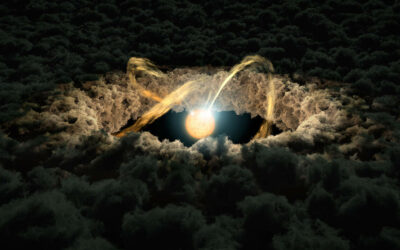The Space & Beyond Blog
Dwarf galaxies in the Local Group and beyond
Likely the building blocks of massive galaxies, dwarf galaxies saturate the universe.
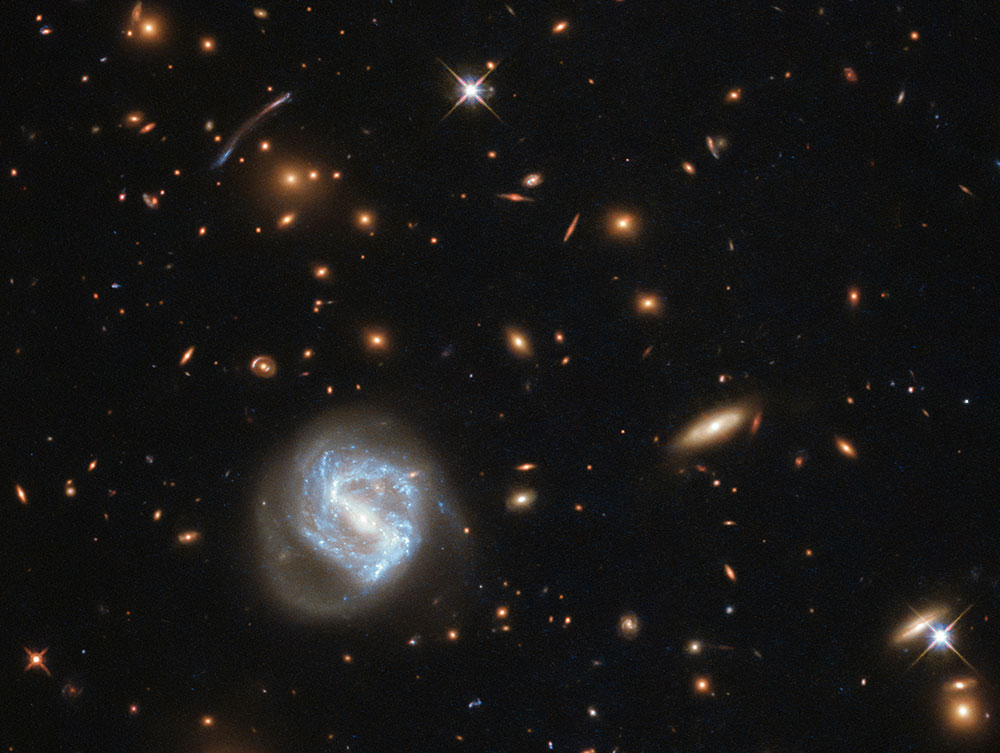
The galaxy cluster in this image is SDSS J0333+0651. Clusters such as this help astronomers understand how galaxies evolved in the early universe. Credit: ESA/Hubble & NASA
Our Local Group of galaxies lies on a side street 50 million light-years from the great intersection of two dark matter filaments that created the magnificent Virgo Cluster of about 2,000 galaxies. To alien astronomers living in the Virgo Cluster, our little galactic neighborhood would appear as two smudges of light: the Milky Way Galaxy and the Andromeda Galaxy (M31). Together, they might be dismissed as a “binary galaxy” on some extraterrestrial’s star chart. Only with extraordinarily powerful telescopes would Virgo astronomers pluck out the roughly four dozen small dwarf galaxies that make up our Local Group.
The innocuous name Local Group belies the fact that our neighborhood is more like a rough and tumble town in the Wild West. Murder, mayhem, missing bodies — even cannibalism — stalk the streets. In reality, we are seeing order emerge out of the chaos of energy and matter that followed our universe’s birth; the Local Group is a microcosm of the rowdy cosmos at large.
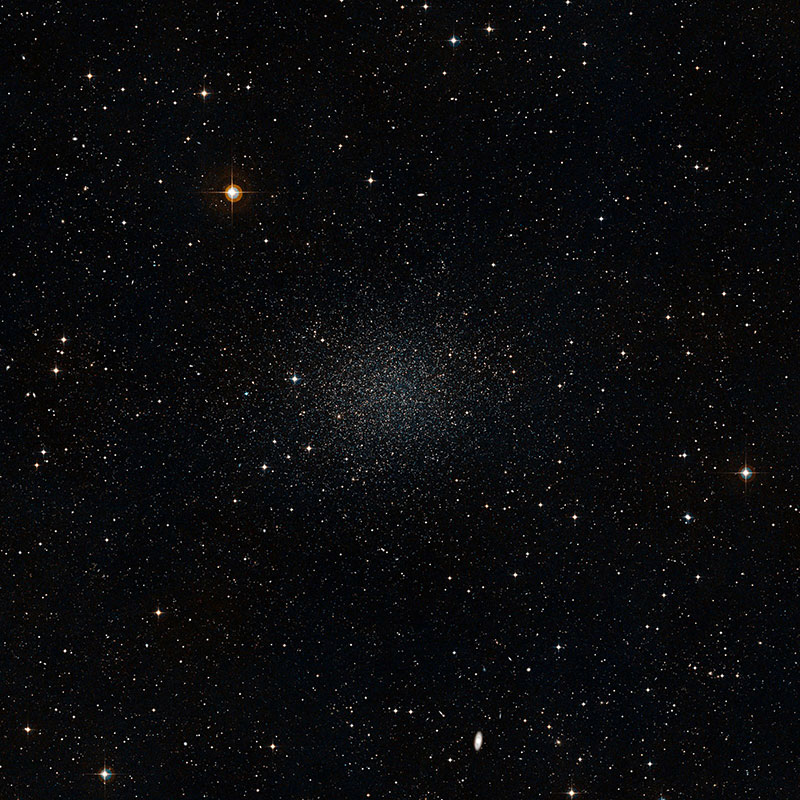
The Sculptor dwarf galaxy is one of the companions of the Milky Way galaxy. Credit: ESA/Hubble, Digitized Sky Survey 2
Outnumbered
The biggest galaxies in our Local Group are the Milky Way, Andromeda, and the Triangulum Galaxy. Each of these have their own satellite galaxies. The Milky Way’s more famous satellites are the Large and Small Magellanic Clouds, but there are also around 20 dwarf galaxies orbiting around us.
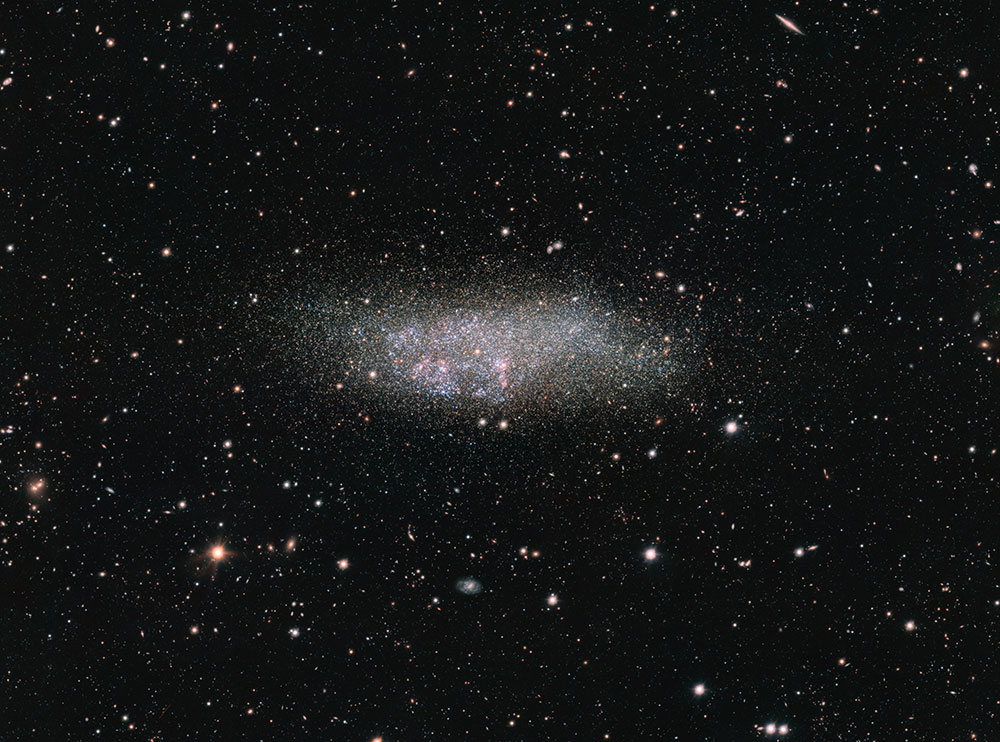
The Wolf-Lundmark-Melotte (WLM) dwarf galaxy is one of our Local Group’s galaxies. WLM sits on the outer edge of the group and has likely never interacted with any of the other galaxies in our group, making it a lone wolf. Credit: ESO
Looking at our Local Group, it’s not hard to understand why astronomers believe that dwarf galaxies are the most common type of galaxy in the universe. But common doesn’t mean easy to detect. Where the Milky Way is composed of somewhere between 200 and 400 billion stars, dwarf galaxies can have as few as 1000 to several billion stars. Meaning that in addition to being smaller and less massive than a large galaxy, dwarf galaxies are also very faint.
Celestial family tree
There are a few recipes to create a dwarf galaxy.
The universe’s oldest dwarf galaxies likely were pulled together around the cosmos’ dark matter skeleton. The map of the known universe shows that most galaxies are organized into clusters, but some galaxies are situated along filaments that connect the clusters. Cosmologists have theorized that dark matter undergirds those filaments, which serve as highways of sorts, guiding galaxies toward the gravitational pull of the massive clusters. This would explain why dwarf galaxies are usually found as part of a larger galaxy group.
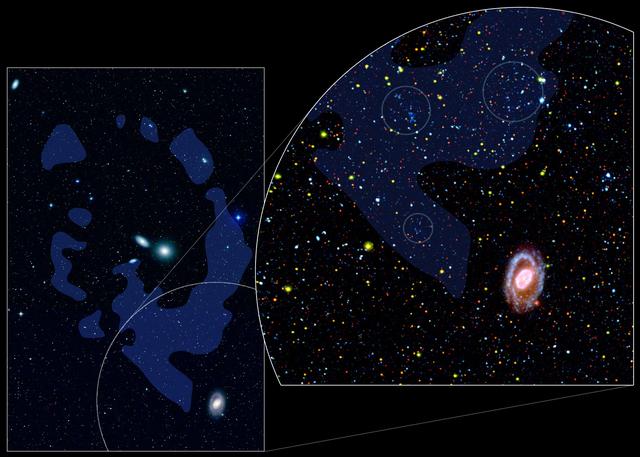
For the first time, researchers spy dwarf galaxies forming from nothing but pristine gas leftover from the early universe using NASA’s Galaxy Evolution Explorer. Credit: NASA/JPL-Caltech/DSS
But that isn’t the only way dwarf galaxies form. In 2009, NASA’s Galaxy Evolution Explorer spotted dwarf galaxies forming out of nothing more than gas leftover from the early universe. This means that the new galaxies are devoid of dark matter. The infant galaxies were found inside the Leo Ring, a huge cloud of hydrogen and helium that surrounds two massive galaxies in the Leo constellation.
However, they form, dwarf galaxies are likely the building blocks of larger galaxies. A massive galaxy will rip apart their younger siblings, swallowing the smaller galaxy in what’s known as a galaxy merger.
Enjoying our blog?
Check out the Space & Beyond Box: our space-themed subscription box!
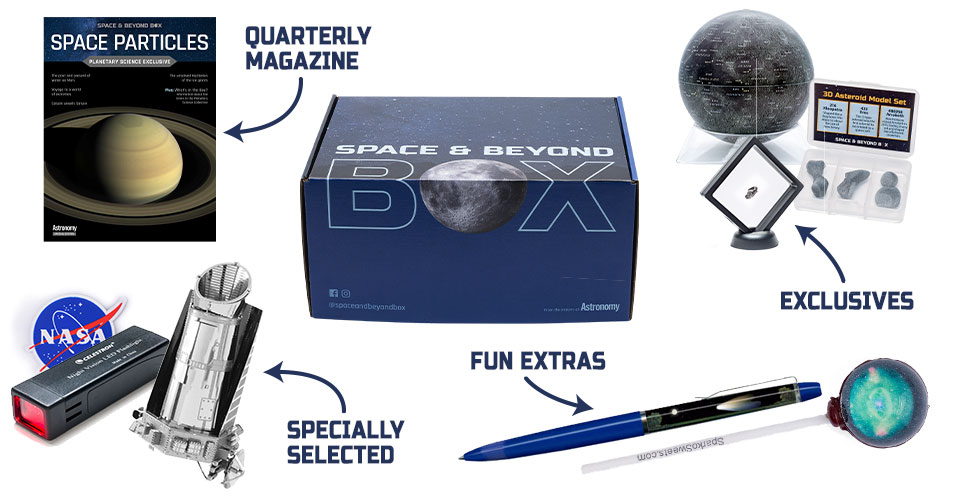
CONNECT WITH US ON INSTAGRAM
CHECK OUT OUR LATEST BLOGS
Tour the inner solar system
Take a deep dive into the rocky planets that make up our local neighborhood.

